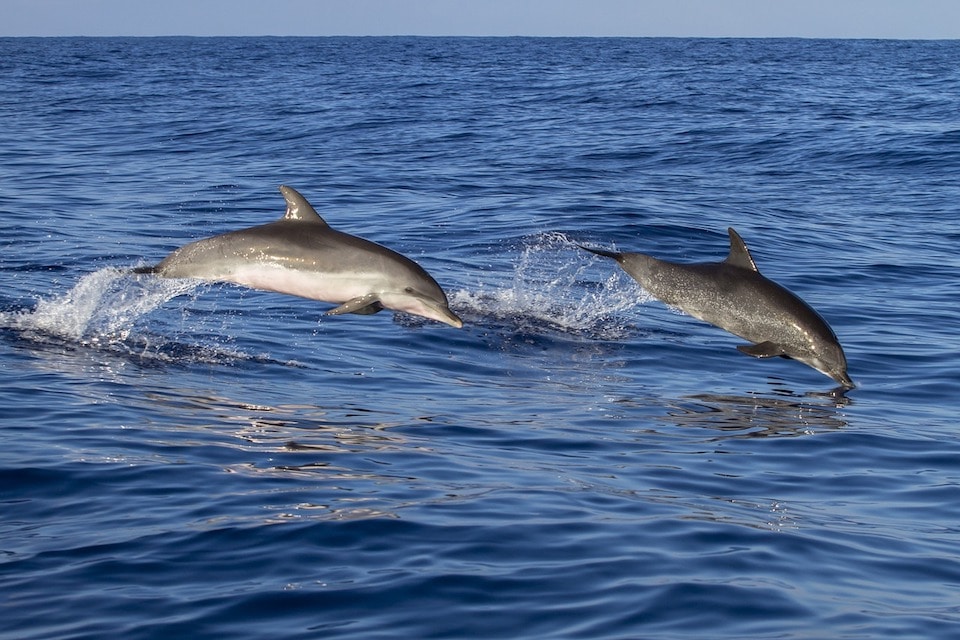Last updated on May 21, 2023 by Roger Kaufman
Dolphin makes bubbles – successful entry into the new decade
Dolphins are fascinating creatures known for their playful and intelligent nature.
One of their most notable behaviors is creating bubbles – dolphin makes bubbles.
This fascinating ability has thrilled scientists and observers alike.
Dolphins make bubbles for various reasons.
One theory is that they do this as a kind of game or for entertainment. By expelling air through their bubble gap, they create impressive patterns and formations that slowly dissolve in the water.
This behavior can be considered a Kind of creative expression or even serve as a means of communication with one another.
Another theory says that Dolphins bubbles use to catch fish.
By creating a kind of “fishing net” of air bubbles, they can direct the fish in a specific direction or trap them, which helps them hunt prey.
This behavior demonstrates the dolphins' amazing ability to exploit their environment and employ clever hunting strategies.
In addition, air bubbles can also have a function in echolocation important Method of orientation for dolphins.
By making clicks and analyzing the echoes, they can perceive their surroundings and find their way around.
Air bubbles could help modulate the echo and thus improve the accuracy of the location.
Watching dolphins making bubbles is a fascinating experience. It shows their adaptability, their intelligence and their playfulness Nature.
Although we are not in theirs thoughts can enter, it is clear that creating air bubbles plays an important role for dolphins and is important for both themselves and their environment.
The study of dolphin behavior and their ability to produce air bubbles continues to be a topic of active scientific investigation.
By observing and studying these fascinating creatures, researchers hope to learn more about their communication, social behavior and unique abilities erfahren.
Dolphin makes bubbles | Dolphin plays with air bubbles
The dolphin, all of them Heart won – let go for a moment to simply enjoy, now!
with air bubbles and lateral line organ
Dolphin makes bubbles | Underwater rings and plays with bubbles
Dolphins Up Close – Tuna Robot Spy – Clip
The top athletes among mammals?
A tuna robot spy covers the middle of a super school of hundreds dolphins watch them perform their spectacular jumps.
documentary universe
Dolphins in the Red Sea – Tourism in Egypt threatens the habitat of the mammals | SRF Einstein
The coral reefs in front of the coast Egypt offers a unique home to large dolphin populations.
Here explores the Swiss Biologist Angela Ziltener studies the lives of the Indo-Pacific bottlenose dolphins and spinner dolphins and advocates for their protection in the wild.
Because they urgently need protection: the ignorance of tourists threatens the popular animals.
Angela Ziltener wants a gentle and sustainable encounter between Man and dolphins.
“Einstein” was able to accompany the dolphin researcher in her work for the Egyptian environmental organization HEPCA – and on spectacular dives into the realm of marine mammals.
SRF Einstein
Wikipedia describes the dolphin as follows:
The Dolphins or Delphine belong to the toothed whales (Odontoceti) and are therefore mammals (Mammalia) that live in the Water live (marine mammals). Dolphins are the most diverse and largest family with around 40 species whales (Cetacea).
They are widespread in all seas, some species also occur in rivers.
Dolphins are usually between one and a half and four meters long Great killer whale The largest dolphin even reaches eight meters.
they have one streamlined Body adapted to high swimming speeds.
There is a round organ in the head Melon. She plays a role in the Echolocation.
In many species the jaws are clearly defined and form an elongated beak. The snout can contain a lot of teeth in several species.
The dolphin's brain is large and has a complex cerebral cortex, which is a reason for many zoologists to consider them smartest counting animals.
But there is also the controversial theory that the large brain is merely an adaptation to... live in the water and serves to better regulate the heat loss to the water.
The basis of this theory is the fact that the dolphin brain has a lot of glial cells and relatively few Neurons has.
It is assumed that the glial cells help with thermal insulation.
Dolphins can quickly learn sequences of movements and reactions to acoustic stimuli, but their learning speed for abstract objects such as triangles or squares is slower than that of pigeons Rats.
The body color usually depends on Black to white together, whereby the underside is usually lighter and the back is clearly defined by a darker color, the cape.
The color exceptions include the bluish one Blue and white dolphin and the brown-yellow one Common dolphin.
Furthermore, they differ Types through lines and fields in different colors and contrasts.
Dolphins have excellent senses of hearing and sight.
External ear openings do exist, but they are probably not functional.
Sounds reach the inner ear via the lower jaw and middle ear.
Their hearing range extends to frequencies of up to 220 kHz and they can therefore hear sounds far into the Ultrasound range perceive.
The Eyes are primarily adapted to see underwater, but also have a high level of functionality outside of the water.
Echolocation using ultrasound plays a major role in perception.
Dolphins differ from other toothed whales in the following features: fusion of the first two cervical vertebrae, a smaller number of ribs, fusion of the two halves of the lower jaw at a maximum of a third of the jaw length and blunt teeth.
All dolphins shed their outer skin cells about every two hours. This permanent Regeneration reduces flow resistance and is also considered in regeneration research for humans and in shipbuilding.
The dolphins' skin promotes their fast swimming through low flow resistance via fine relief and vortex damping through plasticity, typical of the dolphins Whale skin.
Wikipedia












Pingback: Empathy means - sayings of the day